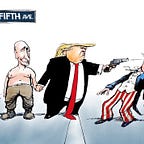The Battle of Verdun — Edge of Tomorrow Easter egg.
In the 2014 film “Edge of Tomorrow,” directed by Doug Liman and starring A-listers Tom Cruise and Emily Blunt, there are several references and motifs related to the historic Battle of Verdun, albeit in a futuristic and fictive sci-fi context.
Backdrop
The backdrop of the movie and the storyline is that space invaders named “Mimics” have attacked planet Earth and are taking over the world. Humans face extinction and have to join together to fight for their survival. The United Defense Force (UDF) is formed, by far the largest army in the world. After 5 years of fighting, the Mimics have proved superior and the humans have only managed one victory, known as the Battle of Verdun. The Special Forces warrior who led Team Human to victory is the former school teacher “Rita Vrataski” (Emily Blunt).
Sergeant Major Rita “Rose” Vrataski is formidable on the battlefield, the best-skilled, most experienced and decorated soldier in all of the United Defense Force, and world-famous as the “Angel of Verdun”. Even the most rebellious and hardened soldier will automatically stand at attention out of respect when she enters the room. Millions will follow her into battle without hesitation if she requests it. The mere phrase “the Battle of Verdun” inspires awe.
The real battle of Verdun
𝐓𝐡𝐞 𝐁𝐚𝐭𝐭𝐥𝐞 𝐨𝐟 𝐕𝐞𝐫𝐝𝐮𝐧 (Bataille de Verdun / Schlacht um Verdun) is known as the longest and most grueling battle of World War I, and one of the longest and costliest in human history. It was a war of attrition, with each side trying to overwhelm the other. The battle was fought from 21 February to 18 December 1916 (lasting 302 days,) on the Western Front in France. Some estimates suggest that both sides suffered approximately 714,000 casualties between them (killed, wounded, or missing in action) during the course of the battle itself — an average of 70,000 per month.
The German Chief of the General Staff, Erich von Falkenhayn, intended to rely on the power of heavy artillery to inflict mass casualties. French General Joseph Joffre, the Commander-in-Chief of the French Army, clung to outdated tactics and strategies, and made several strategic decisions that contributed to vulnerabilities that allowed the Germans to initially advance rapidly; but after some weeks, the German attacks had lost the advantage of surprise and faced a determined and well-supplied adversary in superior defensive positions.
The limited German success was costly and French artillery inflicted more casualties as the German infantry tried to dig in. The French at Verdun, under the leadership of General Philippe Pétain, commander of the French Second Army, managed to hold onto Verdun despite intense German pressure and heavy casualties. While Pétain was not considered a master strategist, his tactical acumen and organizational skills were critical in the French victory. His inspirational leadership and frequent visits to the troops helped maintain French morale and resolve during the grueling battle[. The “defense in depth” approach that he implemented allowed the French to withstand the German onslaught and ultimately prevail. It is widely considered a French victory due to their successful defense of the fortress city of Verdun against the German offensive.
